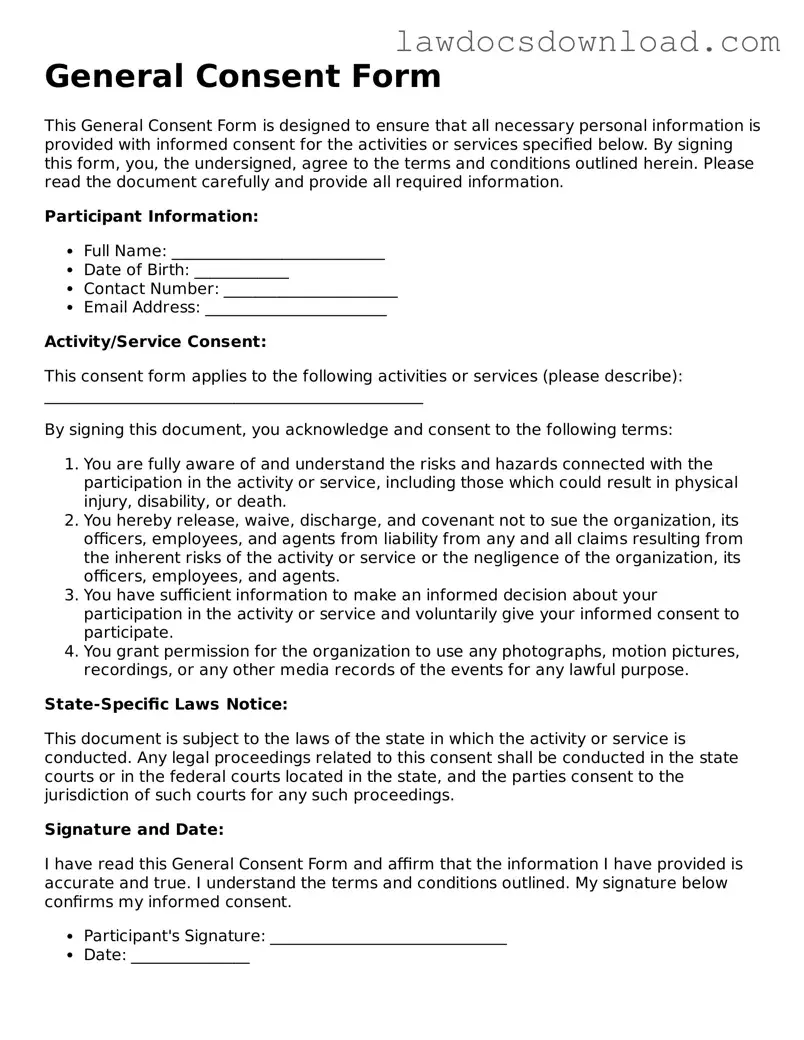One common mistake people make when filling out the Consent form is neglecting to read the instructions thoroughly. These instructions are designed to guide individuals through the process, ensuring that every piece of necessary information is accurately provided. When instructions are overlooked, critical details may be missed or incorrectly filled out, leading to potential delays or complications in the consent process.
Another area where errors frequently occur is in the section requiring personal information. Participants often enter incorrect data, such as misspelling their names or providing outdated contact details. This discrepancy between official documents and the information provided can lead to verification issues, complicating the consent verification process.
Similarly, failing to properly date the form constitutes another prevalent mistake. The date is vital for establishing the validity of the consent. An undated or incorrectly dated form may render the consent null and void, requiring participants to complete the process again.
Many individuals also mistakenly skip sections that are applicable to their situation. This oversight can stem from a misunderstanding of the form’s requirements or from simply overlooking a section. When sections relevant to the participant's circumstances are left blank, it might result in incomplete consent, affecting the legal standing of the agreement.
A significant error made during the completion of the Consent form is not reviewing the document before submission. A review allows participants to catch and correct any mistakes or omissions. Without this final check, errors are likely to go unnoticed, which can lead to errors in the consent process.
Incorrect or incomplete signatures also top the list of errors. The consent form requires a signature that matches the one on official documents. If the signature is missing, incomplete, or significantly different from the official signature, it might not be recognized as valid.
Many also neglect the need for a witness's signature where required. Some consent forms require a witness to the signing process to ensure the validity and voluntary nature of the consent. Ignoring this step can invalidate the form.
Another mistake involves the misuse of additional comments sections. Instead of clarifying or specifying consent-related preferences, individuals often leave these sections blank or use them to include irrelevant information, missing an opportunity to customize their consent according to their wishes.
Last but not least, using an outdated version of the Consent form can lead to a bevy of issues. Forms are periodically updated to reflect current laws and regulations. Filling out an outdated form might mean that the consent does not meet current legal standards, necessitating a resubmission on the correct, up-to-date form.
